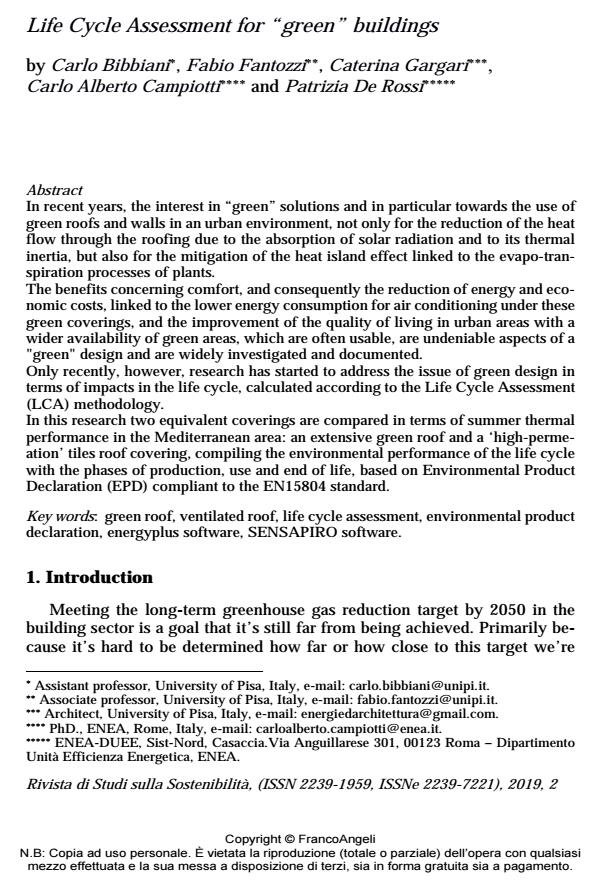Life Cycle Assessment for "green" buildings
Journal title RIVISTA DI STUDI SULLA SOSTENIBILITA'
Author/s Carlo Bibbiani, Fabio Fantozzi, Caterina Gargari, Carlo Alberto Campiotti, Patrizia De Rossi
Publishing Year 2020 Issue 2019/2 Suppl.
Language English Pages 17 P. 195-211 File size 199 KB
DOI 10.3280/RISS2019-002-S1013
DOI is like a bar code for intellectual property: to have more infomation
click here
Below, you can see the article first page
If you want to buy this article in PDF format, you can do it, following the instructions to buy download credits

FrancoAngeli is member of Publishers International Linking Association, Inc (PILA), a not-for-profit association which run the CrossRef service enabling links to and from online scholarly content.
In recent years, the interest in "green" solutions and in particular towards the use of green roofs and walls in an urban environment, not only for the reduction of the heat flow through the roofing due to the absorption of solar radiation and to its thermal inertia, but also for the mitigation of the heat island effect linked to the evapo-transpiration processes of plants. The benefits concerning comfort, and consequently the reduction of energy and economic costs, linked to the lower energy consumption for air conditioning under these green coverings, and the improvement of the quality of living in urban areas with a wider availability of green areas, which are often usable, are undeniable aspects of a "green" design and are widely investigated and documented. Only recently, however, research has started to address the issue of green design in terms of impacts in the life cycle, calculated according to the Life Cycle Assessment (LCA) methodology. In this research two equivalent coverings are compared in terms of summer thermal performance in the Mediterranean area: an extensive green roof and a ‘high-permeation’ tiles roof covering, compiling the environmental performance of the life cycle with the phases of production, use and end of life, based on Environmental Product Declaration (EPD) compliant to the EN15804 standard.
Keywords: Green roof, ventilated roof, life cycle assessment, environmental product declaration, energyplus software, SENSAPIRO software.
Carlo Bibbiani, Fabio Fantozzi, Caterina Gargari, Carlo Alberto Campiotti, Patrizia De Rossi, Life Cycle Assessment for "green" buildings in "RIVISTA DI STUDI SULLA SOSTENIBILITA'" 2 Suppl./2019, pp 195-211, DOI: 10.3280/RISS2019-002-S1013